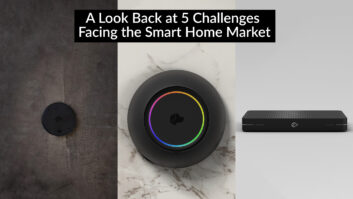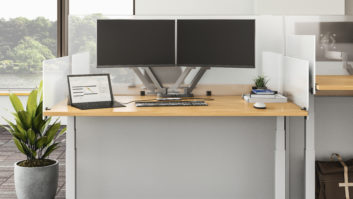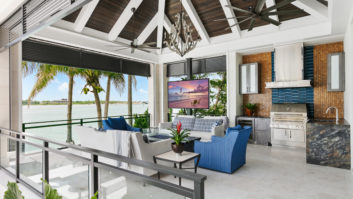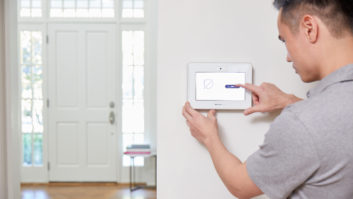It’s June–a time of year when graduation rites take center stage. In keeping with this theme, we’ll assume that as a custom electronics installer you’ve completed you’ve graduated from the basic training and installation of home networks and are ready to master the brave new world of distributed audio/video and home control systems connected to the home network IP backbone.
One of the great advantages of designing an IP-based digital home is that it can be installed to match the way the customer lives today and seamlessly upgraded in the future to accommodate new manufacturers products, technologies, and lifestyles. Designing a digital home almost always starts with a home-networking infrastructure connected to an always-on high-speed Internet connection.
Typically this means a cable or DSL modem is installed in a wiring closet in the house where all the data lines from each room in the house meet. The concept is similar to electrical service coming into a circuit breaker panel which serves current to all the electrical loads and outlets in the home. In a digital home the broadband Internet service enters the home’s low-voltage distribution panel and emerges to provide bi-directional flow of high-speed data over Cat5e/6 lines terminated in data outlets throughout the home.
Your Bachelors Degree in Home Computer Networking. By now someone in your company should be very knowledgeable about the installation and configuration of PCs, Macs, printers, routers, switches, and wireless access points that connect to the Cat5e/6 data ports installed throughout the home. These products usually serve as productivity tools for the home, allowing your client’s family to work from home, do school homework, email and a great variety of other computer-related tasks.
The Masters Program for Installing Networked Distributed Entertainment Systems. The next evolution of today’s home network is the addition of IP enabled distributed entertainment solutions. As more and more of our clients’ audio and video content becomes digitized and stored on hard drives, the opportunity to transport this content to all of the home’s televisions and sound systems becomes increasingly attractive. Adding a digital audio/video server or player to a television or sound system are sensible solutions because they help leverage and distribute the digital content in the home to more areas of the house where it can be enjoyed.
One of the unique characteristics of digital-based solutions is that one audio/video server can simultaneously serve content to many zones in the home; the traditional analog limitation of one source to one zone at a time is eliminated. Another invaluable enhancement provided by digital A/V solutions is the ability to broadcast information about the content being viewed or heard in the form of album cover art, titles, and artist information to a control pad or television where the content is enjoyed. Products like the Microsoft Media Center Computer and the distributed audio and video systems from Sonos and Kaleidescape are excellent examples of how digital audio and video sources are distributed and remotely controlled throughout the home.
Pursuing a PhD in Whole-House IP Control Solutions. Let’s assume that you are now a distributed A/V IP guru for the home and ready to take on the next challenge. The final evolution in the home network design is to add home control to the digital home. The fundamental concept of a unified digital home control system is that a computing platform can communicate over IP protocol to all the subsystems in your home, not just computer and A/V equipment. In this scenario, the home’s lights, thermostats, security panel, phones, cameras, even sprinkler irrigation controllers all reside on the home network and can be controlled by touch screen interfaces that may be on your computer, in the wall, or in your hand. The key benefit of these types of home control systems is that you can more easily unify the graphical user interface of each of these systems. One can control the thermostat and sprinkler system (for example) with an interface that is much more intuitive than what you might find on the single line LED display commonly found on thermostats or sprinkler system controls. Products from Motorola-Premise Systems, Control 4, Superna, and Exceptional Innovations’ enhancements to the Microsoft Media Center platform are good examples of IP-based home control products that are shipping now or will be available by the end of this year.
Another great benefit of adding these systems on the home network is that they can be remotely controlled over the Internet. Using the thermostat and sprinkler system as an example; your customer can turn off the home sprinklers from any Internet connected station in the world (if they know it’s going to rain at their home) and turn off the home heating (if it was accidentally left on before they left). Homeowners with second homes find these to be exceptionally useful features. When you have fully mastered all of the elements of the digital home, then you will be able to design and understand the functionality and benefits of a digital home.
Perhaps the most important lesson to learn from this advancing wave of IP products into the home is that you are aware of them and can discuss their advantages and disadvantages with your clients. As custom electronics integrators we have a responsibility to our clients to advise them not only on technology solutions are best suited for their needs today but which products will emerge that satisfy their residential technology needs for tomorrow. Educated with the knowledge of both analog and digital solutions for the home, custom electronics integrators can credibly and confidently serve the technology needs of all of their clients over the long term. That’s how our businesses will thrive.







